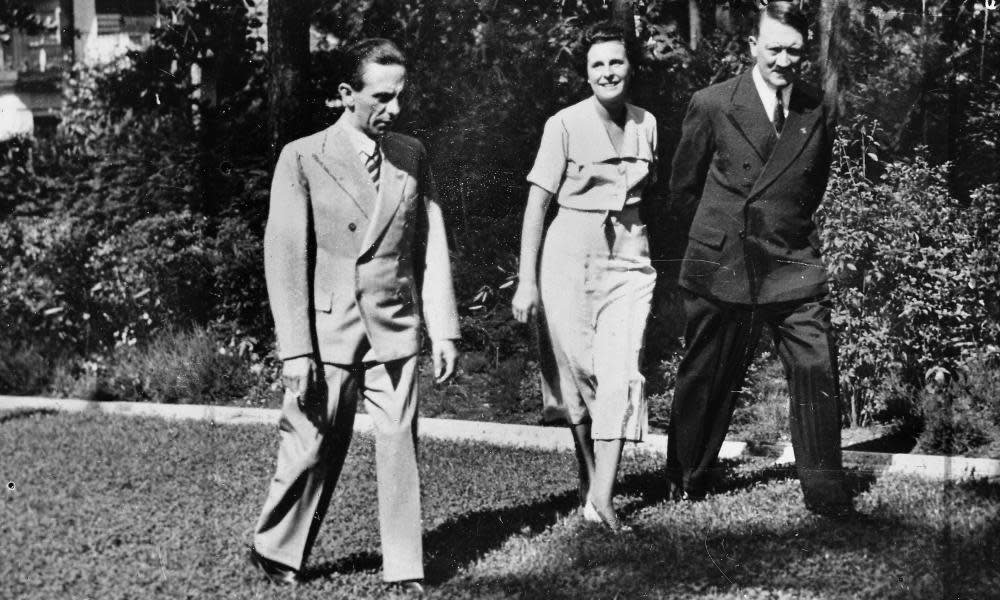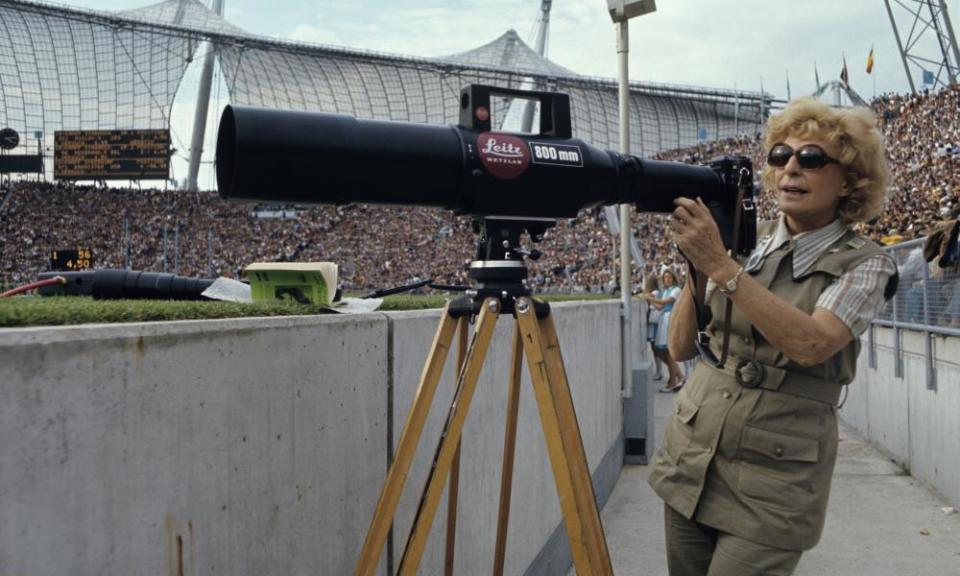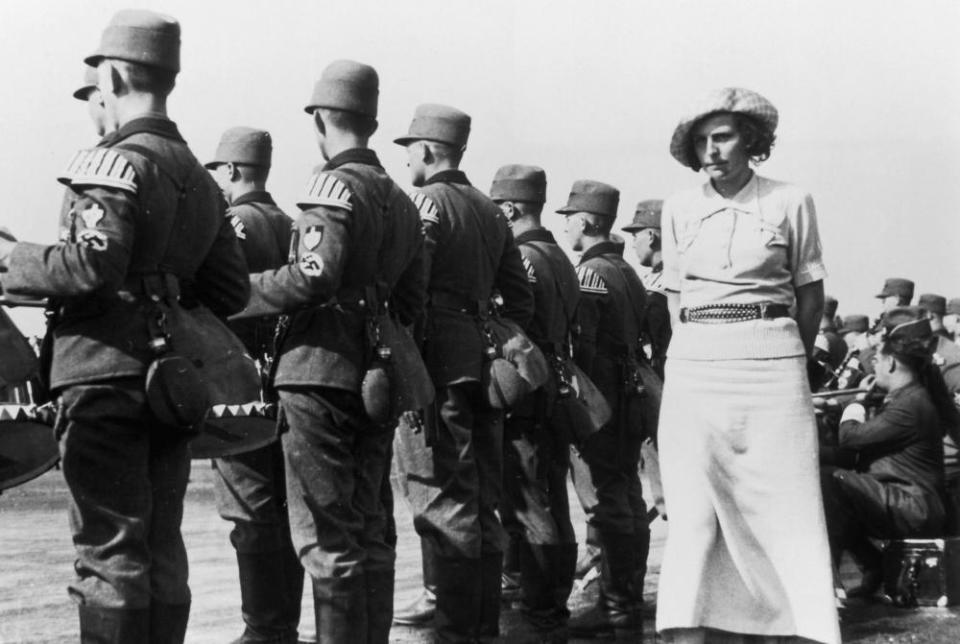Leni Riefenstahl archive to throw new light on Hitler's film-maker

Photograph: Roger-Viollet/REX/Shutterstock
Donning white gloves, Ludger Derenthal removes a green floral cardboard box from a packing case, and carefully takes out the photographs inside.
He lays an array of sepia portraits of the propagandist Leni Riefenstahl across the table of the workshop of the Museum of Photography in Berlin. “In these cases are items that no one outside of Riefenstahl’s intimate circle have ever seen before,” he says.
Derenthal, the museum’s director, will soon be in possession of all 700 cases containing the estate of Hitler’s favourite film-maker and neo-Nazi icon. It includes photographs, films, letters, documents, even her diving suit and gowns, as well as boxes of film rolls dating back to the 1920s.
Just a stone’s throw from the museum is the Ufa Palast cinema, where premieres of her Nazi movies Triumph of the Will and Olympia took place with great fanfare in the 1930s. Hitler and his propaganda minister Joseph Goebbels marvelled at her talent for bringing their fascistic politics on to the screen for the masses to enjoy, under the guise of art.
Riefenstahl died in 2003 at the age of 101. But her estate remained in her house on the banks of Lake Starnberg in Pöcking, Bavaria, until the death of her husband in 2016, leaving her secretary, Gisela Jahn, as the sole heir. Jahn said Riefenstahl had always wanted the estate to return to Berlin, where she was born and which was witness to many of the highlights of her controversial career.

A team of German-speaking archival specialists and Riefenstahl experts will spend the next few years in a collaboration between the photography museum, the film archive and the national library, to try to piece together the life of Riefenstahl, who attempted right up until her death to promote the image of herself as a political naif who had more or less been caught up by accident in the Nazi machine.
Among the controversies involving Riefenstahl the estate may throw light on is her feature film Tiefland, for which 122 Sinti and Roma extras were personally selected by Riefenstahl from two holding camps. After filming they were transported to Auschwitz, where most were murdered.
Nina Gladitz, who has just completed a book on Riefenstahl, said she was sceptical that anything of historical substance would emerge from the estate due to the amount of evidence Riefenstahl herself destroyed after 1945, including close-ups from the film where the murdered Sinti might have been identifiable, so that she could not be held culpable for their deaths.
“This episode has been completely ignored by academics and film historians,” said Gladitz. “I have no expectation of anything coming out of this research that would throw light on her crimes because Riefenstahl did her utmost in her lifetime to keep her myth intact.”

Among the advisers to the project is Rainer Rother, the artistic director of the German film archive and a Riefenstahl biographer. He said there was little more to be learnt about Riefenstahl’s role in the Nazi era. “I’m not expecting any unsettling findings to be made – the situation of Riefenstahl between 33 and 45 has been brilliantly researched already – but I am expecting that the picture we have of Leni Riefenstahl and how she created her films and photos to become much clearer,” he said.
Concerns have been voiced that the estate will prompt a new wave in Riefenstahl fanatics, many of whom continue to celebrate the last surviving prominent member of the Third Reich as an artist of great stature, often ignoring the political context.
Others have expressed unease that Riefenstahl’s photographs will be stored in the same museum where Helmut Newton’s work has been on display since 2004. The Jewish photographer was forced to flee Nazi Germany as a boy in 1938, and is buried in Berlin.
Brian Winston, professor of film at Lincoln University, said he was appalled at the decision to bring Riefenstahl’s works together with Newton’s. “It’s an absurd and disgusting obscenity that the estate of Hitler’s favourite film-maker is to be given a home in the foundation of a man who was forced to flee Nazi Germany because he was a Jew.
“Those who see anything to admire in Riefenstahl’s work, which was mired in fascistic content and sensibility, have been duped again just as she, and those who supported her, wanted.”
Derenthal said the museum was reassured by Jahn’s assertions that the two were friends, Newton having visited Riefenstahl in Pöcking, and points to the correspondence that passed between them.
As a climax of the preview, Derenthal produces a folder of letters, labelled “Special Correspondence H-Z”. As those present squeeze together to get a closer look he says: “I’m afraid to disappoint you, but there is no letter from Adolf Hitler here.”
Instead there are notes to Riefenstahl from Siegfried and Roy, the legendary entertainment duo, the actor Sharon Stone and Newton, who wrote: “Dear Leni, you look bewitchingly glamorous and those legs ... poor Marlene (Dietrich – the German film star) would be green with envy.”
Some have cited the letter as proof of a close relationship between Newton and Riefenstahl, others as the photographer’s successful attempt to flatter her into sitting for him for Vanity Fair at the age of 100.
The result, showing a hollow-eyed Riefenstahl, powdering her face, was deemed to be deeply unflattering and a critique of her Third Reich role. “So much for them being friends. This was Newton’s final revenge on the Nazi grand dame,” says Gladitz.

 Yahoo News
Yahoo News 
